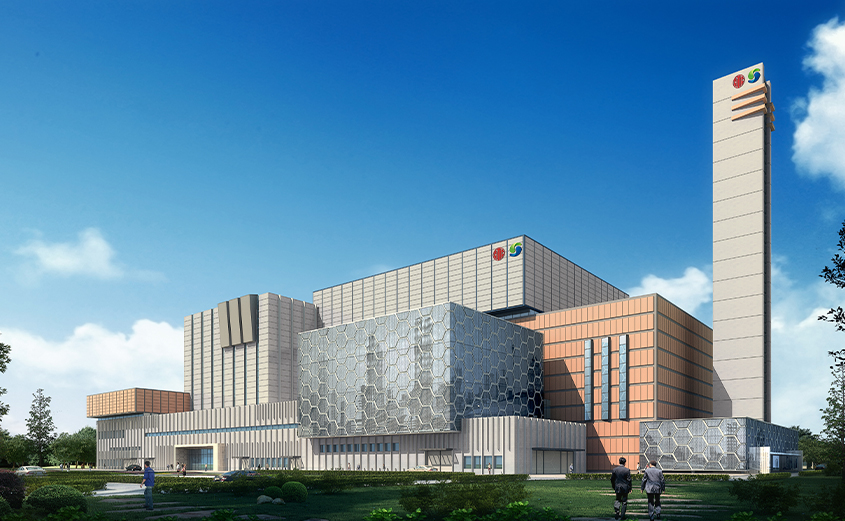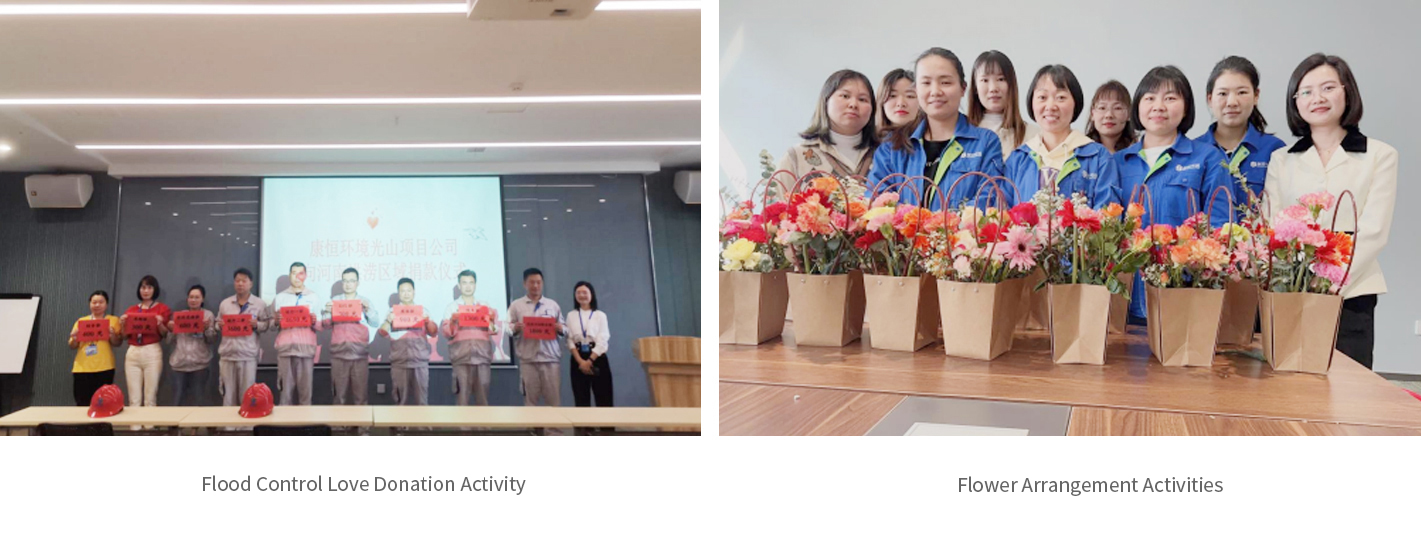Scan the QR-Code to Follow our WeChat Official
Account to Get the Latest News

Project address:Xinyang City, Henan Province, Guangshan County, Zhaihe Town, Luohu Village, Xie Dianzi Xinyang SUS New Energy Co., Ltd.
Appointment visit contact phone number:+86 0376-8567803-8019
The Waste-to-Energy Plant PPP Project in Guangshan County is situated in Xiedian Village, Luohu Village, Zhaihe Town, Guangshan County. Its primary mandate involves the harmless, reduction, and resource-based treatment of household waste originating from Guangshan, Huangchuan, and Xin Counties. With a daily waste treatment capacity of 1200 tons, construction activities commenced on June 28, 2019, followed by its integration into the power grid for electricity generation on January 4, 2020.
The Waste-to-Energy Plant PPP Project in Guangshan County assumes pivotal significance as a key planned layout project within the Guangshan Eco-Industrial Park. Notably, the industrial park holds distinction as one of the inaugural nine demonstration parks in Henan Province and is recognized as one of the 50 national resource recycling bases approved by the National Development and Reform Commission and the Ministry of Housing and Urban-Rural Development in 2018.


1. Integration of "Hive" Concept and "Deindustrialization" Design design
The Guangshan project adopts a "deindustrialization" design concept, underscored by the metaphorical incorporation of the "hive" concept within its exterior design. This conceptual framework serves as a symbolic representation of the bustling activity of waste collection trucks akin to the industrious bees gathering pollen within the urban landscape. The waste-to-energy plant is compared to a beehive wherein household waste undergoes transformation into clean energy akin to bees producing honey. This allegorical narrative draws parallels between the sequential stages of "bees collecting pollen, returning to the hive, producing honey, and sharing with the world."

2. Implementation of SUS-Hitachi Zosen Machinery Grate Incineration Technology
The project features two 600 t/d mechanical grate furnaces, characterized by a three-stage structure encompassing "drying stage, combustion stage, and burnout stage." This configuration ensures comprehensive waste incineration, facilitated by a grate system engineered to withstand elevated temperatures and resist corrosion, thereby ensuring prolonged operational efficiency.
3. Utilization of Advanced Equipment and Technology
The centralized control room houses the Distributed Control System (DCS), monitoring system, and alarm system. Real-time monitoring capabilities enable timely access to equipment operation data and parameters, facilitating prompt operational adjustments to ensure the safe and efficient functioning of the units.
4. Adherence to Stringent Flue Gas Emission Standards
The Guangshan project adopts an advanced smoke treatment process encompassing SNCR (Selective Non-Catalytic Reduction), semi-dry method, dry method, activated carbon injection, and bag filter along with flue gas recirculation. This comprehensive approach ensures that smoke emission indicators surpass not only national standards (GB18485-2014) but also the EU emission standards (2010/75/EU).
5. Environmental Science Popularization Education Base
The project serves as an educational hub through its dedicated visiting corridor and ground floor environmental education base. These facilities offer insights into waste material processing technologies, emphasize waste classification and material recycling practices and advocate for green environmental principles. Additionally, the ground floor serves as a designated location for citizen visits, tourism, and student social engagement initiatives focused on environmental education.
1. Integration of "Hive" Concept and "Deindustrialization" Design design
The Guangshan project adopts a "deindustrialization" design concept, underscored by the metaphorical incorporation of the "hive" concept within its exterior design. This conceptual framework serves as a symbolic representation of the bustling activity of waste collection trucks akin to the industrious bees gathering pollen within the urban landscape. The waste-to-energy plant is compared to a beehive wherein household waste undergoes transformation into clean energy akin to bees producing honey. This allegorical narrative draws parallels between the sequential stages of "bees collecting pollen, returning to the hive, producing honey, and sharing with the world."

2. Implementation of SUS-Hitachi Zosen Machinery Grate Incineration Technology
The project features two 600 t/d mechanical grate furnaces, characterized by a three-stage structure encompassing "drying stage, combustion stage, and burnout stage." This configuration ensures comprehensive waste incineration, facilitated by a grate system engineered to withstand elevated temperatures and resist corrosion, thereby ensuring prolonged operational efficiency.
3. Utilization of Advanced Equipment and Technology
The centralized control room houses the Distributed Control System (DCS), monitoring system, and alarm system. Real-time monitoring capabilities enable timely access to equipment operation data and parameters, facilitating prompt operational adjustments to ensure the safe and efficient functioning of the units.
4. Adherence to Stringent Flue Gas Emission Standards
The Guangshan project adopts an advanced smoke treatment process encompassing SNCR (Selective Non-Catalytic Reduction), semi-dry method, dry method, activated carbon injection, and bag filter along with flue gas recirculation. This comprehensive approach ensures that smoke emission indicators surpass not only national standards (GB18485-2014) but also the EU emission standards (2010/75/EU).
5. Environmental Science Popularization Education Base
The project serves as an educational hub through its dedicated visiting corridor and ground floor environmental education base. These facilities offer insights into waste material processing technologies, emphasize waste classification and material recycling practices and advocate for green environmental principles. Additionally, the ground floor serves as a designated location for citizen visits, tourism, and student social engagement initiatives focused on environmental education.







Scan the QR-Code to Follow our WeChat Official
Account to Get the Latest News